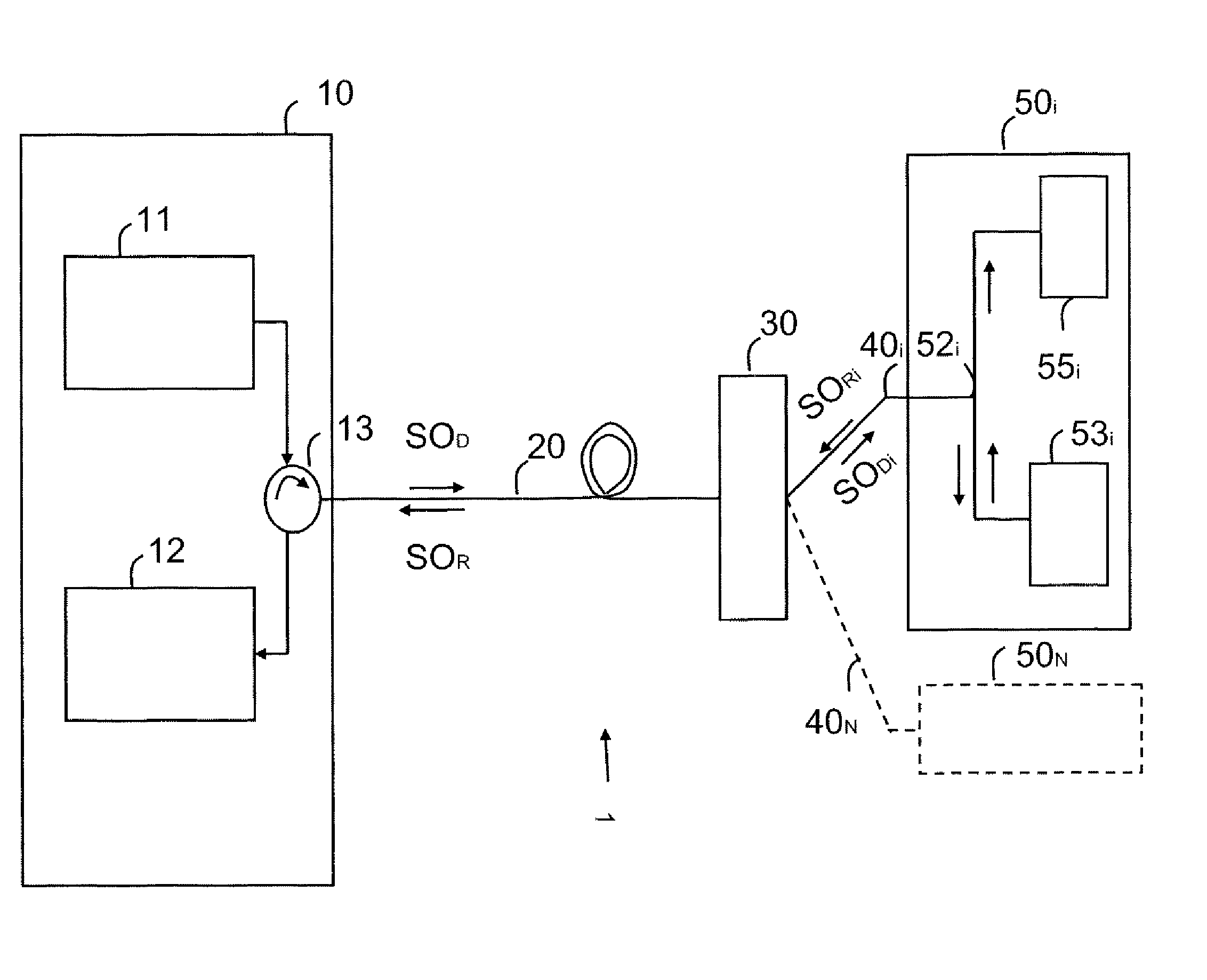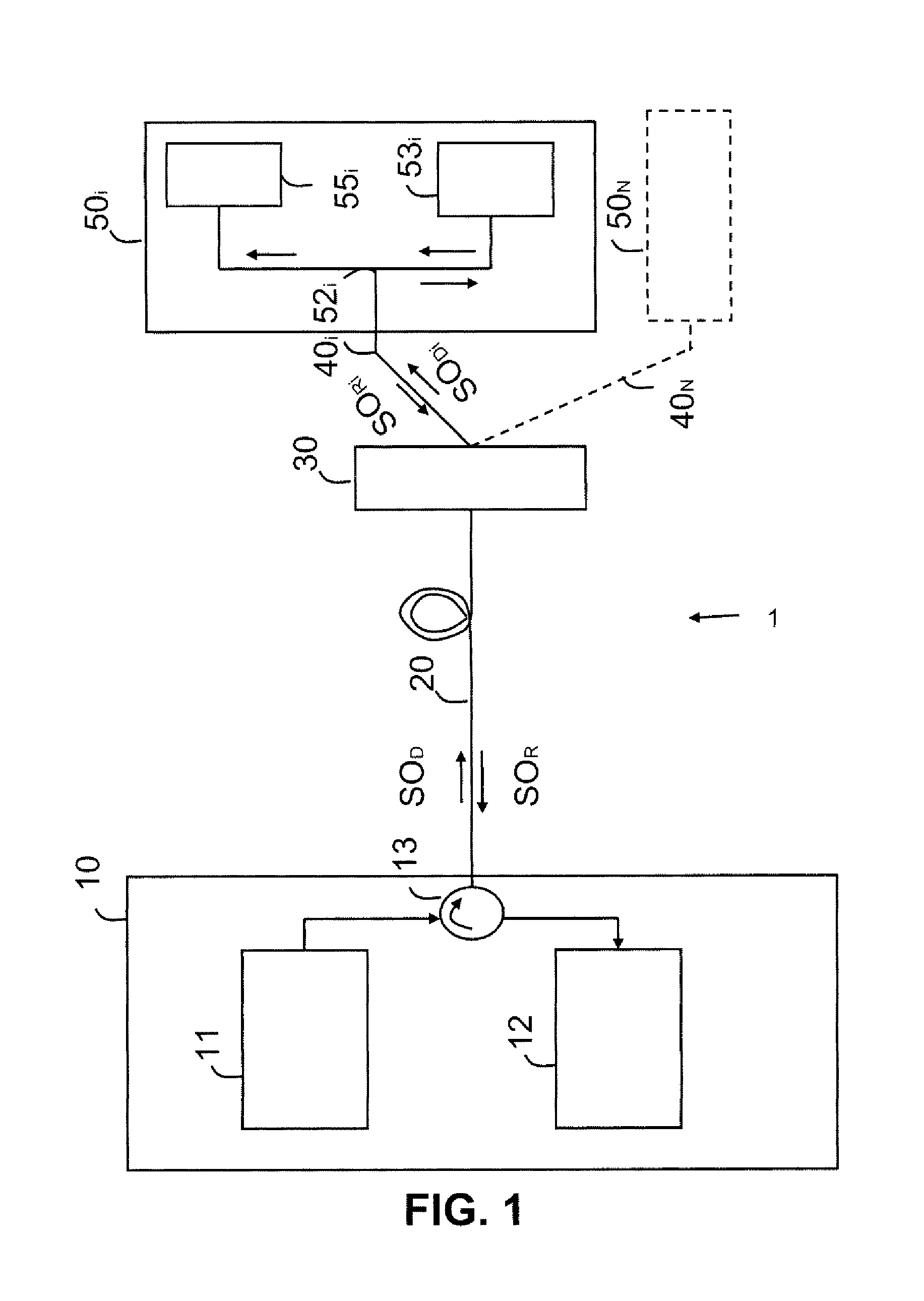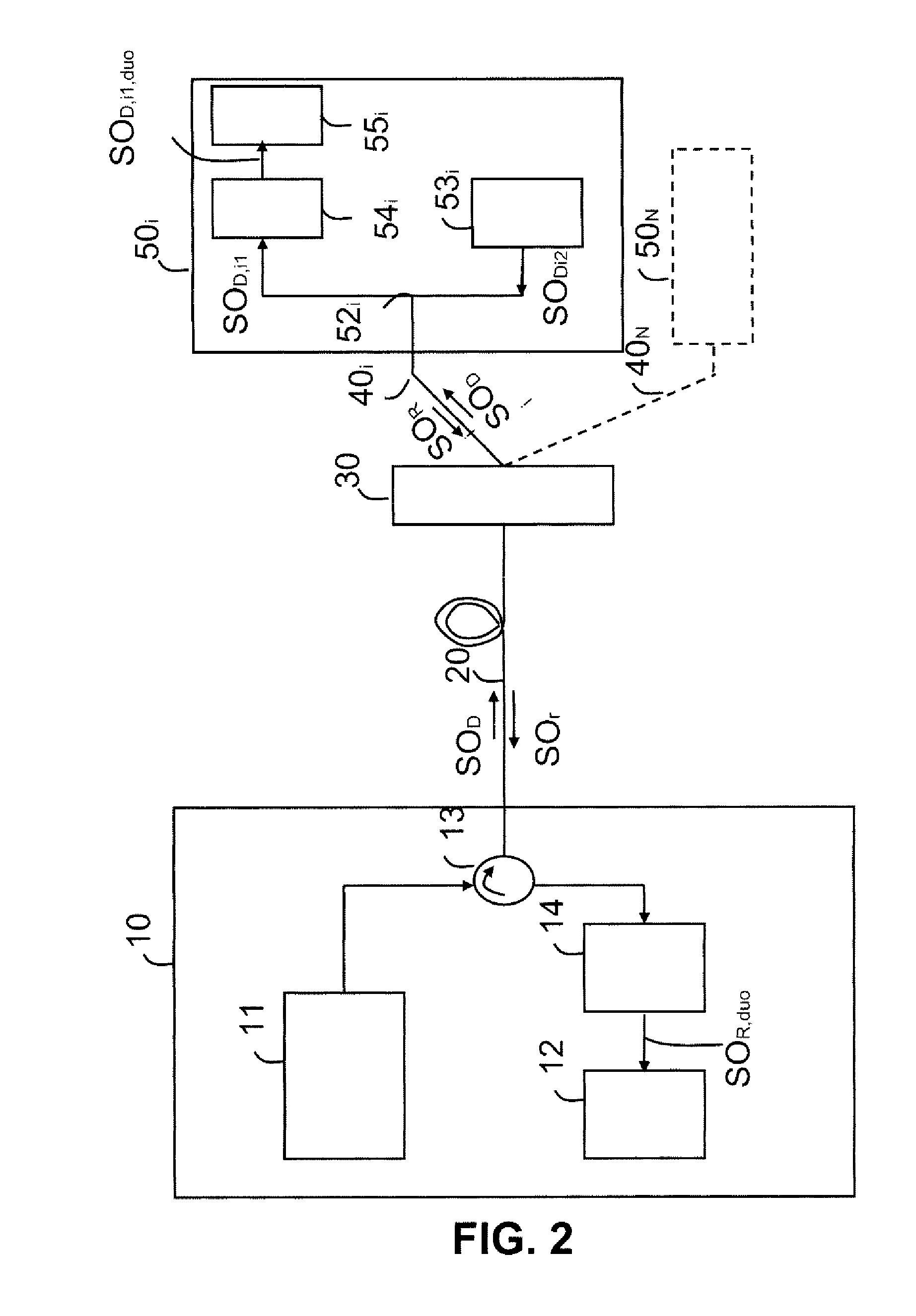High bit rate bidirectional passive optical network, associated optical exchange and line termination device
a passive optical network and high bit rate technology, applied in the field of optical access networks, can solve the problems of access networks, electrical energy consumption, and networks that are costly for telecommunications operators
- Summary
- Abstract
- Description
- Claims
- Application Information
AI Technical Summary
Benefits of technology
Problems solved by technology
Method used
Image
Examples
first embodiment
[0084]In this first embodiment of a high bit rate, long haul passive optical network, the amplification means 15 and 31 transmit an amplification signal at a single wavelength, for example at 1450 nm for the downlink and uplink optical signals transmitted at the wavelength of 1550 nm.
second embodiment
[0085]In a high bit rate, long haul passive optical network, the WDM technology is used, based on the distribution of the wavelength resources. In other words, a subscriber is allocated a wavelength. In this case, the line distribution element 30 is a 1-to-N optical multiplexer / demultiplexer which filters the downlink optical signal SOD and routes to a subscriber only the portion of this signal that concerns him and that, in the uplink direction, multiplexes the uplink signals transmitted, at different wavelengths, by the different line termination devices. Compared to the TDM passive network, the WDM access network is more costly, because it uses a greater number of wavelengths and a routing element. On the other hand, it is simpler to implement and offers subscribers greater security, because a wavelength is assigned to a subscriber and the optical demultiplexer attenuates the transmitted signal far less than the coupler does.
[0086]With a WDM access network, the amplification mean...
PUM
 Login to View More
Login to View More Abstract
Description
Claims
Application Information
 Login to View More
Login to View More - R&D
- Intellectual Property
- Life Sciences
- Materials
- Tech Scout
- Unparalleled Data Quality
- Higher Quality Content
- 60% Fewer Hallucinations
Browse by: Latest US Patents, China's latest patents, Technical Efficacy Thesaurus, Application Domain, Technology Topic, Popular Technical Reports.
© 2025 PatSnap. All rights reserved.Legal|Privacy policy|Modern Slavery Act Transparency Statement|Sitemap|About US| Contact US: help@patsnap.com



